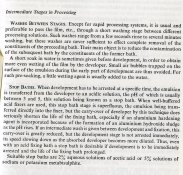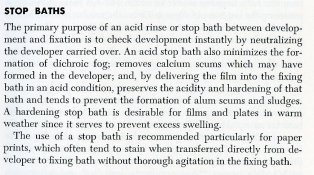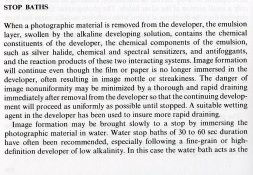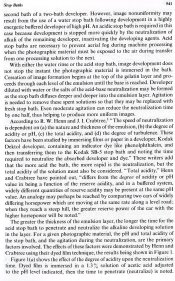Yes, it is so, but an approximation. It takes place over less than 15" at 68 deg F.
PE.
I think the best approach now for our sub-discussion is to take it in a series of small steps to best avoid misunderstandings or confusion.
Let us set up a coordinate system to help clarify the discussion. Let the solution be on the left and the emulsion on the right.
One implication of the model you have posed, together with the coordinate system defined above is the following. There is a net displacement of charge to the right. In other words, the emulsion is a slab of material that acquires a net positive charge because positively charged hydrogen ions have been transported into the emulsion. This leaves a net negative charge in the solution, most of which will be in a relatively thin layer near the solution-emulsion interface.
A related effect occurs with the hydroxide ion, though to a lesser degree. They diffuse from the emulsion toward the solution. This is because the the concentration of hydroxide ions is higher in the emulsion than in the solution. This process adds to the net positive charge in the emulsion, i.e. removing negative ions (hydroxide ions) from the emulsion increases the net positive charge in the emulsion.
We will consider the other ions to be relatively fixed in space because they diffuse much slower than hydrogen ions (and hydroxide ions.) This is of course an approximation.
With respect to the reaction between hydrogen ions and hydroxide ions, this has no effect on the local net charge balance. This is the result of charge conservation. For example, let us consider a single hydrogen ion (do you mind if I just call them protons?) in close proximity to a single hydroxide ion. Considering only these two ions and not any other ions that may be in the vicinity, the net charge of the proton-hydroxide pair is zero. If these two ions then react to form a water molecule there is no change in the net local charge. Therefore, with respect to the location of the charge distributions there is no need to consider the acid-base neutralization reaction. (There could be an indirect effect because the neutralization reaction may change the concentration gradients, which in turn can affect the diffusion rates, but this is a fine point that need not concern us at this point.)
Let us see if we can agree that this description is a consequence of the model you have proposed.














